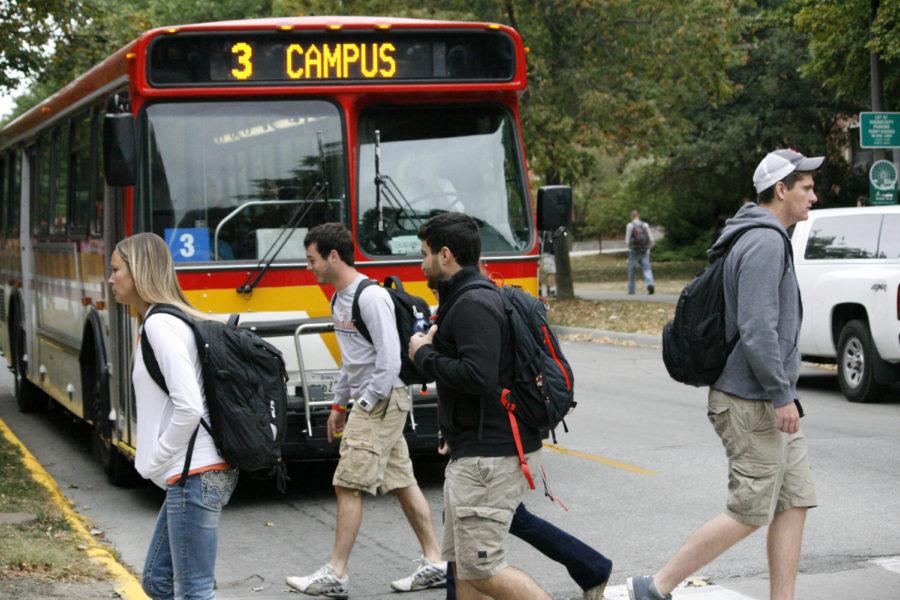Editorial: CyRide growth could cost students
Brandi Boyett/Iowa State Daily
Along with the MyState app, students can use CyRide’s app, MyBus, to find routes and bus schedules.
October 21, 2015
Since 1981, CyRide has helped the students and residents of Ames get around the city and Iowa State’s campus and ultimately has made it possible for campus and the student body to expand.
If CyRide didn’t exist, neither would the possibility for housing in West Ames or in the Copper Beach and Grove Apartments area because those students wouldn’t have any convenient way of getting to campus, even if they had a car.
Ultimately, the fleet of CyRide buses and drivers has made it possible to grow the ISU community, to a certain extent. But with 36,001 Iowa Staters on campus this school year, students are outnumbering CyRide’s reach, and it’s a serious issue that could have a negative domino effect on students’ pocketbooks and college experience.
The Ames City Council met with the CyRide Board of Trustees Tuesday night to discuss the current state of CyRide’s routes, drivers and number of buses and what should be done to rectify the situation.
In only three years, federal transportation funding has disappeared, and the student body increased by nearly 5,000 students, which has led to a whole host of other issues.
Students currently pay $66.35 per semester for CyRide as part of their student mandatory fees, but come spring 2016 that will be increased to $73.10 per semester to cover the cost of having CyRide for student use. The money issues don’t stop there.
Sheri Kyras, CyRide transit director, said it could cost up to $50,000 per bus and $200,000 per route per year to keep up with the demands of the programs because changes need to be made to the current structure by adding new buses and routes or seriously revamping the model that is currently in place.
Councilman Matthew Goodman made a suggestion to remove the “student’s ride free” part of CyRide. Although he said he doesn’t want to reduce the number of students who use CyRide, making them pay to ride would do just that. No student wants to pay out of pocket when tuition money is already going to the program.
Warren Madden, ISU senior vice president for business and finance, suggested that class timing be altered to remove peak ridership times before and after classes. But this possibility would mean impacting lecture hall and classroom rental times and the way students pick their classes.
The ISD editorial board spent about a half hour trying to come up with our own suggestions to fix these issues and could not find a solution to the overcrowding. We admit, it’s a hard situation and we can only imagine what university administration’s conversations are like, but it needs to be addressed.
Wouldn’t forcing students to pay out of pocket each time they ride add to the wait time per stop? Increasing the semesterly fee should cover the needed additional costs. What if we invested in more bendy busses? Could we create an entirely new route to alleviate some of the pressure from other routes?
The conversation is far from over. But one way to push it forward is for students to voice their suggestions. Tell administration what you think could help the CyRide saturation.







